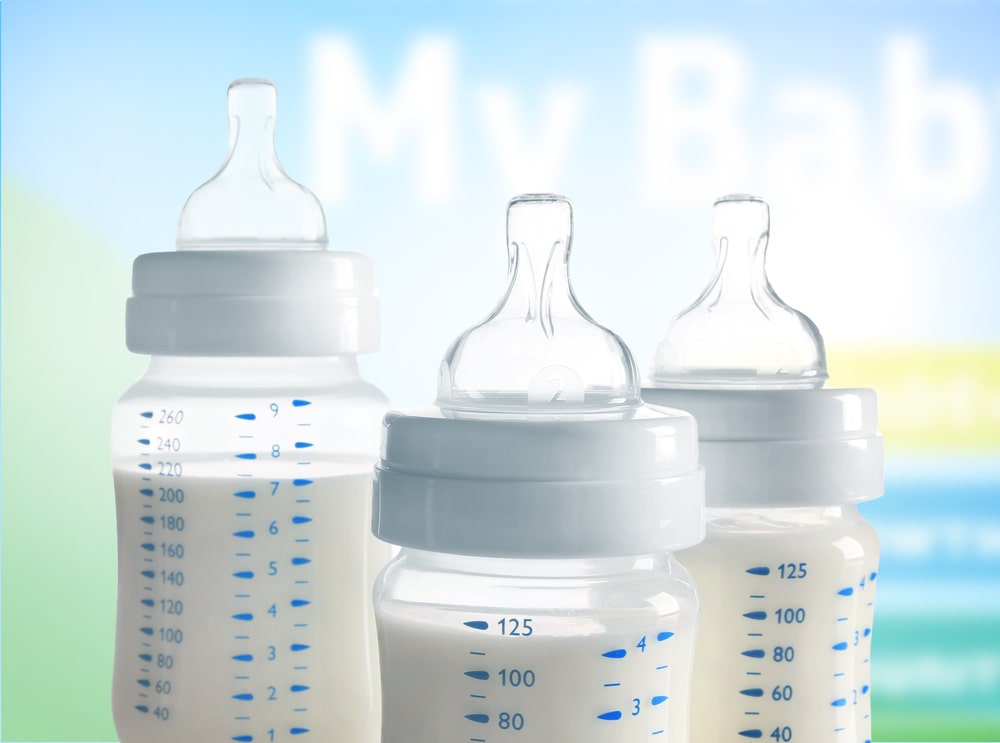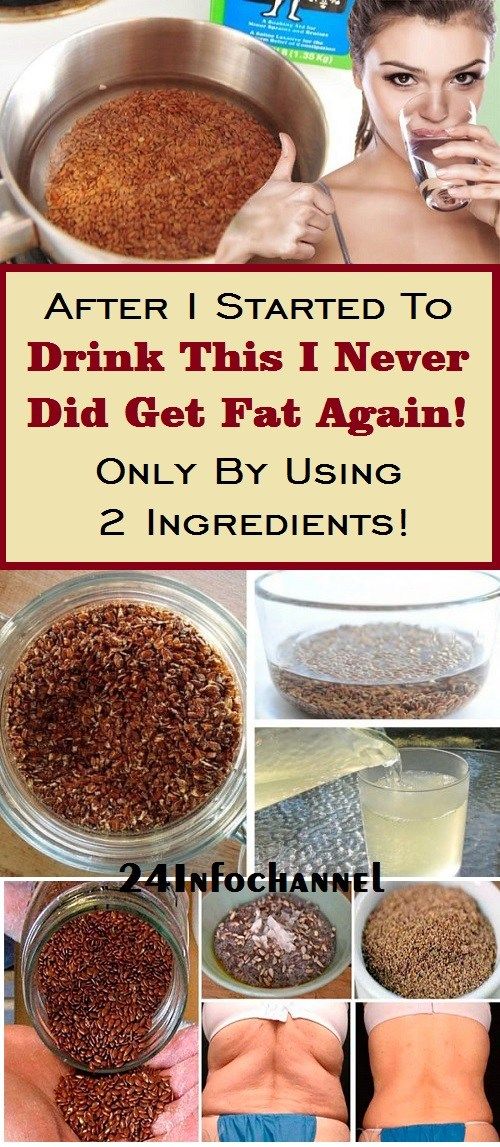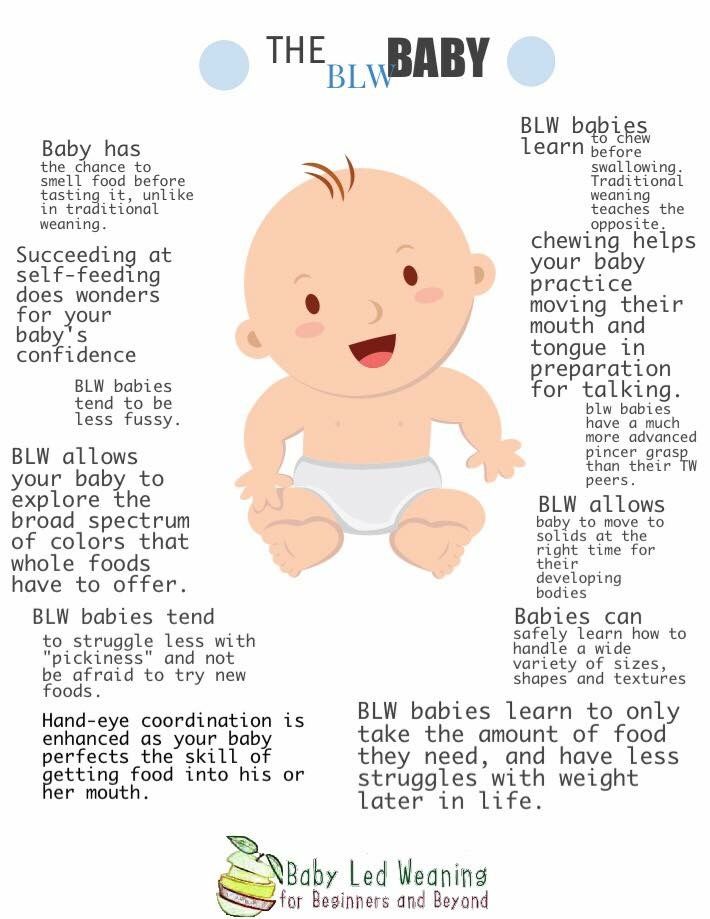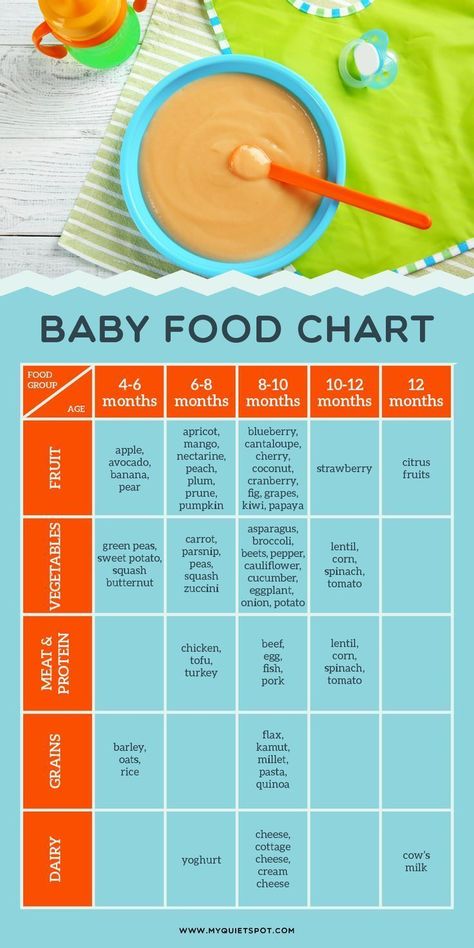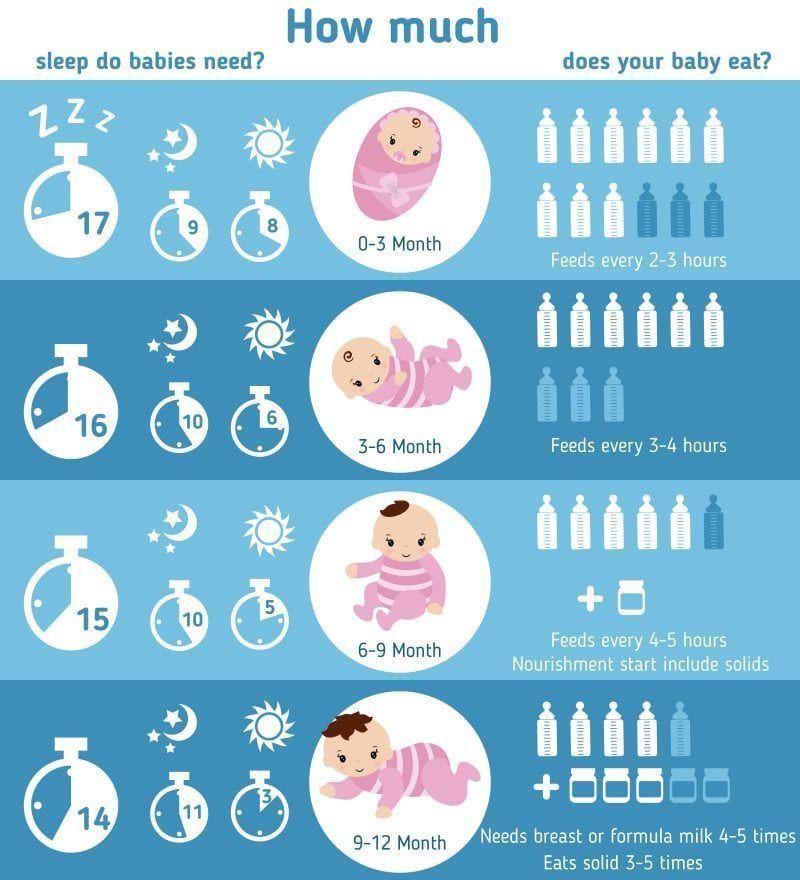Does baby need to feed from both breasts
The New Mom Blog | Do I Need to Breastfeed from Both Breasts at Every Feed?
Parents frequently ask us “Do I need to breastfeed from both breasts at every feed? If I do, how do I know when to switch sides?” Great questions! There is no one right answer for all babies. Here are some principles to help you decide.
Our recommendation for one breast or two depends on a couple of factors.
- The age of your baby
In the first few days of your baby’s life, try to offer both breasts at each feed. Frequent feeding stimulates your breasts to begin producing more milk.
Burping and changing the diaper between breasts will help to keep your newborn awake enough to take a little more milk.
Once your baby is an alert and vigorous feeder, you can reevaluate the ‘two breast strategy’.
- Your milk supply
Some mothers have an abundance of milk and their baby fills up on just one breast. Other women need to feed on both breasts every feed for their baby to be satisfied. Each mom and baby pair is different.
Start by feeding on the first breast. When baby seems done (i.e. appears relaxed, releases the nipple, relaxes the hands), burp and change the diaper. If he seems interested, try offering the second side. If he takes it, great. If he doesn’t, no problem. Start on that breast at the next feed. Aim to nurse approximately the same amount on each breast by the end of the day.
Watch your baby. When you see these signs, he is probably ready to switch to the second breast.
- Restlessness.
- Letting go of the breast.
- Falling asleep.
- Sucking for a long time without swallowing milk.
There are some popular pieces of advice on this subject that you should IGNORE.
- “Feed on one breast a feed to make sure baby gets the hindmilk”
Some mothers have been advised to feed on only one breast per feed (despite baby showing ongoing signs of hunger) to ‘make sure baby gets the hindmilk’. Please don’t be fooled by this advice. All breast milk is good milk. If you are concerned about whether your baby gets enough hindmilk, please know that there are only a few situations where it deserves your attention. These are very specific situations, centered around a problem (e.g. a very low birth weight baby or a very gassy baby who is gaining quickly and has consistently green stools.) Consult with your healthcare provider or International Board Certified Lactation Consultant if you have concerns.
Please don’t be fooled by this advice. All breast milk is good milk. If you are concerned about whether your baby gets enough hindmilk, please know that there are only a few situations where it deserves your attention. These are very specific situations, centered around a problem (e.g. a very low birth weight baby or a very gassy baby who is gaining quickly and has consistently green stools.) Consult with your healthcare provider or International Board Certified Lactation Consultant if you have concerns.
- “Breastfeed for 10 minutes on each breast.”
Mothers may be told to breastfeed for a specific amount of time on each breast. Please ignore this advice as well. Timing breastfeeding is not the best choice for moms or babies. Learn why we don’t recommend timing feeds in this post.
Do you need to breastfeed from both breasts at every feed? Watch your baby and you will discover what is right for you.
Breastfeeding FAQs: Supply and Demand (for Parents)
Breastfeeding is a natural thing to do, but it still comes with its fair share of questions. Here's what you need to know about your milk supply.
Here's what you need to know about your milk supply.
How Do I Know if I’m Making Enough Milk for My Baby?
Your baby's diapers can help you tell if your little one is getting enough to eat. The more your baby nurses, the more dirty diapers you'll see.
Pee
Because colostrum is concentrated, your baby may have only one or two wet diapers in the first 24 hours of life. After 3–4 days, look for:
- 6 or more wet diapers per day, with clear or very pale pee. Fewer wet diapers or darker pee may mean your baby's not getting enough to drink. If you see orange crystals in a wet diaper, call your baby's doctor. They're common in healthy, well-fed babies and usually not a cause for concern. But sometimes they're a sign that a baby isn't getting enough fluids.
Poop
A newborn's poop is thick and tarry at first, then more greenish-yellow as mom's milk comes in. After 3–4 days, look for:
- 4 or more yellow, seedy poops per day, usually one after each feeding.
 After about a month, babies poop less often, and many may go a few days without pooping.
After about a month, babies poop less often, and many may go a few days without pooping.
Your baby probably is getting enough milk if your little one:
- feeds 8–12 times a day
- seems satisfied and content after eating
- sleeps well
- is alert when awake
- is gaining weight
If you're worried that you baby isn't getting enough to eat, call your doctor.
How Can I Increase My Milk Supply?
Your milk supply depends on how often you nurse or pump your breasts. The more you breastfeed or pump, the more milk your body makes. So, if you seem to be producing less milk than usual, nurse your baby more often. You also can pump after nursing to help stimulate more milk production.
Some things, like stress, illness, and some medicines, can temporarily lower your supply. But drinking plenty of water and eating nutritious foods can help. Also try to take some time for yourself each day, even if it's only for 15–30 minutes.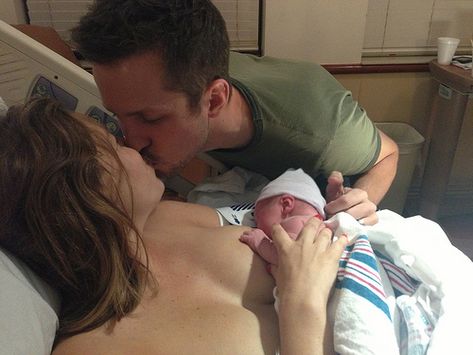
If your baby is younger than 6 months old and you're away from each other for long stretches during the day, pump or hand express every 3 hours to maintain your supply.
If your milk supply still seems low and you're concerned, talk to your doctor or a lactation consultant.
If I Wait to Nurse, Will My Milk Supply Increase?
Actually, no — it's the opposite. Waiting too long to nurse or pump can slowly reduce your milk supply. The more you delay nursing or pumping, the less milk your body will make. That’s because overfilled (engorged) breasts send a signal to your brain that you need to make less milk.
I'm Producing Too Much Milk. What Can I Do?
Some women may feel like they don't have enough milk, while others may feel like they make too much. Some mothers' bodies just make more milk than their babies need. Others overstimulate their breasts by pumping or expressing milk between feedings.
If you feel like you have too much milk, here are some ideas:
- Alternate the breast that you start each feeding with.
 Let your baby stay at the first breast until either the breast is very soft or your baby is full. If your baby is not satisfied with the first breast, offer the second breast.
Let your baby stay at the first breast until either the breast is very soft or your baby is full. If your baby is not satisfied with the first breast, offer the second breast. - Try nursing on only one breast at each feeding, if possible. Over time, you may notice your milk supply and "let-down reflex" (the milk ejection reflex) get easier to handle.
- If expressing or pumping to relieve discomfort, remove just enough to feel comfortable but don't empty the breast completely.
If you’ve tried these things and you still have problems with too much milk, talk to your doctor or lactation consultant.
My Baby Nurses on Just One Breast. Will This Hurt My Supply?
Some babies will be satisfied after nursing from only one breast. Others might prefer one breast over the other. If your baby has only fed from one breast and you are comfortable at the end of a feeding, you don’t need to pump. But if either breast is still full and uncomfortable, pump or hand express to comfort.
To keep up your milk supply in both breasts (and to prevent painful engorgement), it’s best to alternate breasts, whether in the same feeding session or between different sessions. Remember to keep your baby on the first breast until it's soft, and then move your baby to the second breast. This ensures that your little one gets the hindmilk, which is creamier and has more calories than the foremilk, which comes at the beginning of a feeding.
My Baby Is Sleeping Longer At Night. Will This Hurt My Supply?
When babies reach their birth weight and can sleep for longer stretches at night, the time between nighttime feedings gradually lengthens.
Letting your baby sleep for longer periods during the night won't hurt your breastfeeding efforts. Your growing baby can take in more milk during the day — and that, in turn, means longer stretches of sleep at night. Your milk supply will adjust to the new routine.
If you wake during the night with full breasts and a sleeping baby, consider expressing or pumping for comfort to help your body adjust to the new schedule.
If you follow your baby's cues and spread out the feedings, your milk supply should keep up with your baby’s needs.
Reviewed by: Jamila H. Richardson, BSN, RN, IBCLC
Date reviewed: January 2021
Prejudices related to breastfeeding
Instead of an introduction, I would like to say that the ideas of modern women about breastfeeding are a collection of prejudices. They are so common that in many books for expectant mothers and in magazines for parents, it is actions based on prejudice that are described as correct and necessary.
“Breastfeeding is something incredibly difficult, almost no one is able to feed for a long time, everyone always has a lot of problems and one sheer inconvenience”
There is nothing easier, more comfortable, more enjoyable for mother and baby, and, by the way, cheaper than properly organized breastfeeding. But for that to be the case, breastfeeding needs to be learned. The best teacher in this matter may not be a book or a magazine for parents, but a woman who has been breastfeeding her child for a long time, more than a year, and receiving positive emotions from this. There are women who breastfeed for a long time and perceived it as a punishment. For example, one mother fed a child for 1.5 years and for all these 1.5 years she pumped after each feeding, and when she decided that she was enough and decided to wean the child, she had mastitis due to wrong actions. Now she tells everyone that breastfeeding is hell. She didn't feed her baby properly for a single day. nine0003
There are women who breastfeed for a long time and perceived it as a punishment. For example, one mother fed a child for 1.5 years and for all these 1.5 years she pumped after each feeding, and when she decided that she was enough and decided to wean the child, she had mastitis due to wrong actions. Now she tells everyone that breastfeeding is hell. She didn't feed her baby properly for a single day. nine0003
"Breastfeeding spoils the shape of the breast"
It is true that breastfeeding does not improve the shape of the breast, but the breast changes during pregnancy. It is then that it increases and becomes heavier, and, if its shape contributes to this, it “sags”.
Breast changes during lactation. Approximately 1-1.5 months after birth, with stable lactation, it becomes soft, produces milk almost only when the baby suckles. After the end of breastfeeding, 1.5-3 or more years after the birth of the baby, involution of the mammary gland occurs, lactation stops. Iron "falls asleep" until the next time.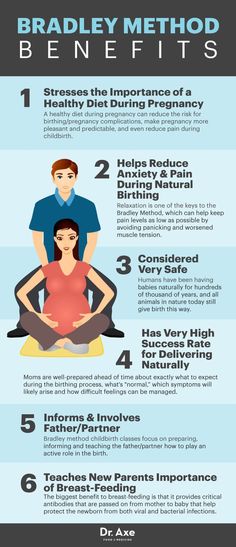 Under natural conditions, the end of breastfeeding always coincides with a decrease in the baby's need for breastfeeding. The chest remains soft, inelastic. The shape of the breast largely depends on the presence of adipose tissue in it, the amount of which decreases during prolonged breastfeeding. After the end of breastfeeding, adipose tissue is gradually restored. If a woman does not feed a child, the involution of the mammary gland occurs within the first month after childbirth. The shape of the breast still does not return to its pre-pregnancy state. And if you think about it and figure out why a woman has breasts at all? It's for breastfeeding. nine0003
Under natural conditions, the end of breastfeeding always coincides with a decrease in the baby's need for breastfeeding. The chest remains soft, inelastic. The shape of the breast largely depends on the presence of adipose tissue in it, the amount of which decreases during prolonged breastfeeding. After the end of breastfeeding, adipose tissue is gradually restored. If a woman does not feed a child, the involution of the mammary gland occurs within the first month after childbirth. The shape of the breast still does not return to its pre-pregnancy state. And if you think about it and figure out why a woman has breasts at all? It's for breastfeeding. nine0003
"Breastfeeding spoils the figure"
Many women are afraid to gain weight while breastfeeding. But usually a woman gains weight mainly during pregnancy, and not when she is nursing. Moreover, if before pregnancy she tried to meet certain fashionable standards, for example, 90-60-90, during pregnancy she returns to her weight, her genetically incorporated physiological norm (and it may be far from fashionable standards) + the well-known 7-10kg per uterus, fetus, amniotic fluid, increased volume of circulating blood and a little bit more for various little things. Weight gain during pregnancy can be significant. Many women begin to lose weight after 6-8 months of feeding, and gradually, in the second, third year of feeding, she “drops” everything that she has accumulated. It turns out that the figure from breastfeeding often just improves. nine0003
Weight gain during pregnancy can be significant. Many women begin to lose weight after 6-8 months of feeding, and gradually, in the second, third year of feeding, she “drops” everything that she has accumulated. It turns out that the figure from breastfeeding often just improves. nine0003
Very often it turns out that a woman, having stopped breastfeeding 1.5-2 months after giving birth, begins to gain weight. Perhaps this is due to the resulting hormonal imbalance, tk. no woman is designed for such a rapid cessation of lactation.
"You have to prepare the breast for feeding." And then various recommendations follow, from sewing hard rags into the bra to advice to the husband at the end of pregnancy to “dissolve the ducts” of his wife
There is no need to prepare the breast for feeding, it is so arranged by nature that by the time of birth it is quite ready to feed the child. Cloths, for example, can cause skin irritation. Any manipulation of the nipple at the end of pregnancy can lead to very undesirable consequences due to the stimulation of the oxytocin reflex: stimulation of the nipple - release of oxytocin - contraction of the muscles of the uterus under the influence of oxytocin - the uterus is "in good shape" - and, as the worst option, stimulation of premature labor. And in general, has anyone seen a cat with a rag in a bra, or a monkey doing a hardening shower massage? nine0003
And in general, has anyone seen a cat with a rag in a bra, or a monkey doing a hardening shower massage? nine0003
“With a flat, let alone inverted nipple, breastfeeding is impossible”
Strange as it may seem to people who have never breastfed, a baby's nipple is just a point from which milk flows. If the child sucks in the correct position, then the nipple is located at the level of the soft palate and does not participate in the actual sucking. The child sucks not the nipple, but the areola, massaging, decanting it with the tongue. A breast with a flat or inverted nipple is difficult for a baby to hold in his mouth while suckling and it is more difficult for him to suck on it. Mom should show patience and perseverance in the first days after the birth of a child. Any child is perfectly trained to suck even the most uncomfortable, from our point of view, breast. nine0003
The nipple changes shape during sucking, stretches and takes on a more comfortable shape for the baby, usually in 3-4 weeks. There are also various devices called "nipple formers". They are put on immediately after feeding, when the nipple is slightly extended by the efforts of the child and worn until the next application. The nipple formers hold the nipple in an extended position. But even without these things it is quite possible to do.
There are also various devices called "nipple formers". They are put on immediately after feeding, when the nipple is slightly extended by the efforts of the child and worn until the next application. The nipple formers hold the nipple in an extended position. But even without these things it is quite possible to do.
It is very important for a mother with flat or inverted nipples to ensure that her baby never suckles anything but her mother's breast after birth. The child of such a mother, having sucked on a bottle or a pacifier, quickly realizes that this is a more convenient object for sucking and begins to refuse the breast. In this situation, mom will need even more patience and perseverance. nine0003
"You can't keep a newborn at the breast for more than 5 minutes, otherwise there will be cracks"
The child should be kept at the breast for as long as he needs. Feeding ends when the baby himself releases the breast.
If we talk about cracks, then there are only three groups of causes that lead to their formation.
- Mom washes her breasts before each feeding. If she does this (and even with soap, and even anoints with brilliant green after feeding - a favorite pastime in Russian maternity hospitals, for example) - she constantly washes off the protective layer from the areola, which is produced by special glands located around the nipple, and dries the skin. This protective lubricant exists just to prevent the loss of moisture in the delicate skin of the nipple, it has bactericidal properties and inhibits the growth of pathogenic microorganisms and, which is especially important for the child, smells about the same as amniotic fluid. The sensitive skin of some women cannot tolerate such exposure for a long time and begins to crack, even with proper attachment of the baby. nine0040
-
Causes related to the incorrect position and behavior of the baby at the breast: the baby is not properly attached and sucks in the wrong position. And if this is true, then 5 minutes after 3 hours is enough for the formation of abrasions, and then cracks.
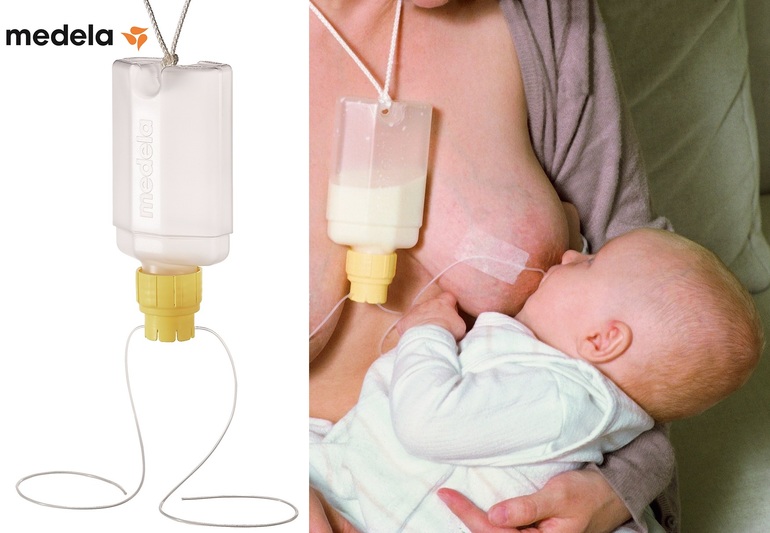 The baby may latch on correctly, but in the process of suckling, he may perform various actions that can lead to cracking if the mother does not know that these actions need to be corrected and not allowed to behave like this. It must be remembered that the child has not suckled before, and does not know how to do it (he knows only the general principle of sucking). Unfortunately, most mothers also do not know how a baby should behave at the breast; they have never, or almost never seen it. What shouldn't a child be allowed to do? "Move out" to the tip of the nipple. This happens especially often if, during sucking, the child does not stick his nose into his mother's breast. If the mother feels that the grip is changing, she should try to press the baby with her nose to her chest. Very often this is enough for the child to “put on” correctly. nine0003
The baby may latch on correctly, but in the process of suckling, he may perform various actions that can lead to cracking if the mother does not know that these actions need to be corrected and not allowed to behave like this. It must be remembered that the child has not suckled before, and does not know how to do it (he knows only the general principle of sucking). Unfortunately, most mothers also do not know how a baby should behave at the breast; they have never, or almost never seen it. What shouldn't a child be allowed to do? "Move out" to the tip of the nipple. This happens especially often if, during sucking, the child does not stick his nose into his mother's breast. If the mother feels that the grip is changing, she should try to press the baby with her nose to her chest. Very often this is enough for the child to “put on” correctly. nine0003
If this does not help, the nipple must be removed and re-inserted correctly. The baby should not suckle the breast incorrectly for a single minute. He doesn’t care how to suck, he doesn’t know that he hurts his mother, he doesn’t know that the wrong position does not allow him to suck out enough milk, he doesn’t know that with the wrong position there is not enough stimulation of his mother’s breast and there will not be enough milk production. You can not let the child play with the nipple. A child who has learned to slide down on the tip of the nipple sometimes begins to pass the nipple back and forth through the parted jaws. Mom, of course, it hurts or is unpleasant, but in most cases, mothers allow this to be done “If only he sucked ...” they say ... Why? It often happens that children who do not feel the touch of the breast with their nose during sucking, or do not feel it very well, begin to make search movements with the nipple in their mouth. Here you need to gently press the baby to your chest so that he understands that he is already in place and there is nothing more to look for. Sometimes, especially if the mother has long and large nipples, the baby grabs the breast in several steps, “climbing” up in several movements.
He doesn’t care how to suck, he doesn’t know that he hurts his mother, he doesn’t know that the wrong position does not allow him to suck out enough milk, he doesn’t know that with the wrong position there is not enough stimulation of his mother’s breast and there will not be enough milk production. You can not let the child play with the nipple. A child who has learned to slide down on the tip of the nipple sometimes begins to pass the nipple back and forth through the parted jaws. Mom, of course, it hurts or is unpleasant, but in most cases, mothers allow this to be done “If only he sucked ...” they say ... Why? It often happens that children who do not feel the touch of the breast with their nose during sucking, or do not feel it very well, begin to make search movements with the nipple in their mouth. Here you need to gently press the baby to your chest so that he understands that he is already in place and there is nothing more to look for. Sometimes, especially if the mother has long and large nipples, the baby grabs the breast in several steps, “climbing” up in several movements. This also happens in cases where the child has already sucked on the pacifier and does not open his mouth well. The nipple is injured so very quickly. To avoid this, it is necessary to properly insert the nipple into the wide-open mouth, bringing the nipple itself past the jaws, as deep as possible. Moms don't know how to breastfeed properly. nine0003
This also happens in cases where the child has already sucked on the pacifier and does not open his mouth well. The nipple is injured so very quickly. To avoid this, it is necessary to properly insert the nipple into the wide-open mouth, bringing the nipple itself past the jaws, as deep as possible. Moms don't know how to breastfeed properly. nine0003
A typical picture for maternity hospitals with separate stay is as follows: a baby was brought to the mother for 30 minutes, the baby held everything correctly and sucked well for these 30 minutes, he would still suck, but they came to pick him up and the mother pulls (slowly or quickly) his nipple from mouth. Six such pulls per day is enough for the development of abrasions. You can take the nipple only after opening the jaw with the little finger (quickly insert the tip of the finger into the corner of the mouth and turn it - it does not hurt at all and no one suffers). nine0003
Diseases of the skin of the nipples. Most often, mothers are faced with a fungal infection of the skin of the nipples - "thrush". In this situation, the skin most often looks "irritated", it can peel off, itch, cracks may appear, even despite proper application, there may be pain during and after sucking, piercing pains along the milk ducts. This problem is usually solved with the use of specific treatment and also has nothing to do with the topic of preparing the breast for feeding or the time the baby is at the breast. nine0003
In this situation, the skin most often looks "irritated", it can peel off, itch, cracks may appear, even despite proper application, there may be pain during and after sucking, piercing pains along the milk ducts. This problem is usually solved with the use of specific treatment and also has nothing to do with the topic of preparing the breast for feeding or the time the baby is at the breast. nine0003
“While there is no milk, it is necessary to drink more water”
The first day after childbirth, liquid colostrum forms in the breast of a woman, on the second day it becomes thick, on 3-4 days transitional milk may appear, 7-10-18 days - milk become mature. Colostrum is scarce and thicker than milk. This is the main argument in most Russian maternity hospitals in favor of supplementing and feeding the child (otherwise he allegedly suffers from hunger and thirst).
If a child needed large volumes of liquid immediately after birth, then nature would arrange the woman in such a way that she would be flooded with colostrum immediately after childbirth. But the child does not need extra water at all. All he needs he gets from colostrum and milk! The water that is given to the child while the mother has colostrum literally “washes away” the colostrum from the gastrointestinal tract, depriving the baby of the action of colostrum necessary for him. Water is given from a bottle, which leads to "tangled nipples" in the baby and may lead to refusal of the breast. Water causes a false feeling of fullness and reduces the need for suckling in a child. If we give a child 100 g of water per day, he sucks 100 g less milk (this applies not only to a newborn). The kidneys of a newborn are not ready for a large load of water and begin to work with overload. The list of arguments against can be continued, but these are enough. nine0003
But the child does not need extra water at all. All he needs he gets from colostrum and milk! The water that is given to the child while the mother has colostrum literally “washes away” the colostrum from the gastrointestinal tract, depriving the baby of the action of colostrum necessary for him. Water is given from a bottle, which leads to "tangled nipples" in the baby and may lead to refusal of the breast. Water causes a false feeling of fullness and reduces the need for suckling in a child. If we give a child 100 g of water per day, he sucks 100 g less milk (this applies not only to a newborn). The kidneys of a newborn are not ready for a large load of water and begin to work with overload. The list of arguments against can be continued, but these are enough. nine0003
“While there is no milk, it is necessary to supplement the child with formula, otherwise he will lose weight, starve”
The child is not designed to receive anything other than colostrum and milk. In the first days after birth, one colostrum is enough for him.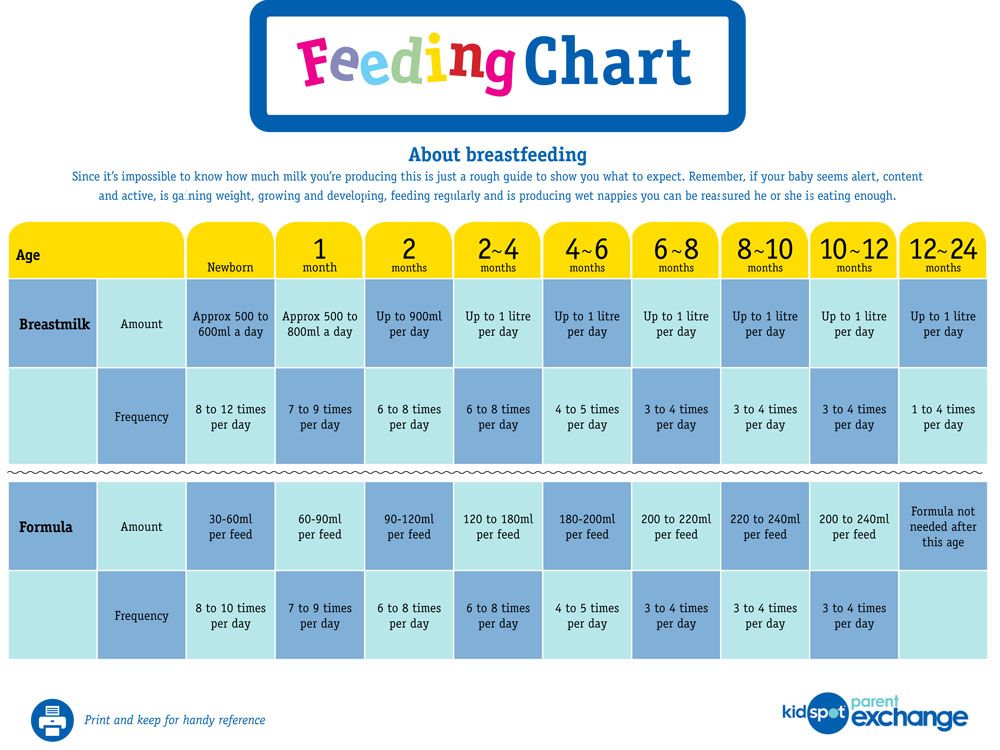 Weight loss in the first day of life is a physiological norm. Newborns lose up to 6-8% of their birth weight in the first two days of their lives. Most children regain their weight or begin to put on weight by 5-7 days of life. Supplementary feeding with a mixture in the first days of a child's life is nothing more than a gross interference in the functioning of the baby's body. You can call this intervention a metabolic catastrophe. But in most Russian maternity hospitals, this is completely ignored! nine0003
Weight loss in the first day of life is a physiological norm. Newborns lose up to 6-8% of their birth weight in the first two days of their lives. Most children regain their weight or begin to put on weight by 5-7 days of life. Supplementary feeding with a mixture in the first days of a child's life is nothing more than a gross interference in the functioning of the baby's body. You can call this intervention a metabolic catastrophe. But in most Russian maternity hospitals, this is completely ignored! nine0003
In addition, the introduction of supplementary feeding is carried out through a bottle, which very quickly leads to "tangled nipples" and the baby refuses the breast. Sometimes one or two bottle feedings are enough to stop a baby from breastfeeding! The mixture causes a feeling of fullness, lingers in the stomach for a long time, the child has a reduced need to suckle the breast, which leads to a decrease in breast stimulation and a decrease in milk production.
“I feed my baby on demand! He demands from me in 3.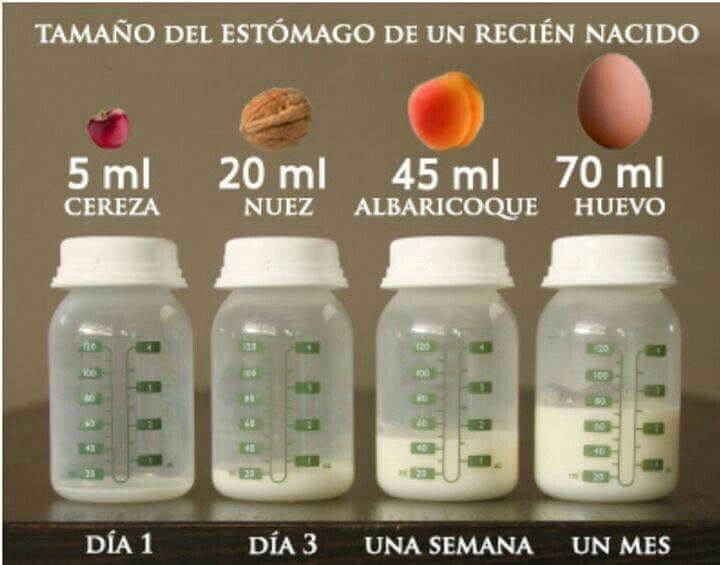 5 hours!” nine0003
5 hours!” nine0003
Feeding on demand means putting the baby to the breast for every disturbance or search. The baby needs breastfeeding around every sleep, he falls asleep at the breast and when he wakes up, he is given the breast. A newborn child in the first week of his life can indeed be applied relatively rarely - 7-8 times a day, but in the second week of life, the intervals between applications are always reduced. During wakefulness, the child can ask for a breast up to 4 times per hour, i.e. every 15 minutes! Usually a child fed on demand is applied in the first month of life 12 or more times a day, usually 16-20 times. If a child in the first months of life is applied less than 12 times, then the mother either does not notice his modest requests, or ignores them (meaning a healthy, physiologically mature child). nine0003
In the overwhelming majority of cases, at the moment when the child begins to ask for a breast more often, the mother decides that the child is starving and introduces supplementary feeding. And the child asks for breasts not at all because he is hungry. He constantly needs a sense of confirmation of physical contact with his mother. During his life in his mother's belly, he is very used to the following: warm, crowded, I hear my heart beating, my lungs breathe, my intestines growl, I smell and taste amniotic fluid (filling the baby's nose and mouth), almost all the time I suck a fist (studies suck). Only in these conditions the baby feels comfortable and safe. After childbirth, he can get into such conditions only if his mother takes him in her arms, puts him on her breast, and then he will again feel cramped, warm, he will hear familiar rhythms, start sucking and feel the familiar smell and taste (the smell and taste of milk are similar to the taste and smell of amniotic fluid). And a newborn child wants to get into such conditions as often as possible. And a modern mother is waiting, she can’t wait, when the intervals between feedings will increase, when will the child start eating in 3.
And the child asks for breasts not at all because he is hungry. He constantly needs a sense of confirmation of physical contact with his mother. During his life in his mother's belly, he is very used to the following: warm, crowded, I hear my heart beating, my lungs breathe, my intestines growl, I smell and taste amniotic fluid (filling the baby's nose and mouth), almost all the time I suck a fist (studies suck). Only in these conditions the baby feels comfortable and safe. After childbirth, he can get into such conditions only if his mother takes him in her arms, puts him on her breast, and then he will again feel cramped, warm, he will hear familiar rhythms, start sucking and feel the familiar smell and taste (the smell and taste of milk are similar to the taste and smell of amniotic fluid). And a newborn child wants to get into such conditions as often as possible. And a modern mother is waiting, she can’t wait, when the intervals between feedings will increase, when will the child start eating in 3.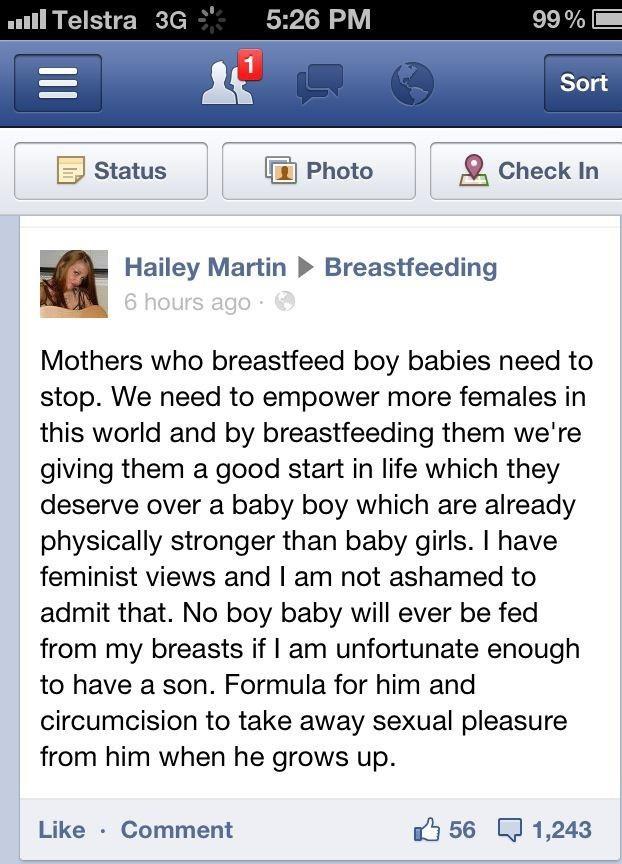 5-4 hours, when will he stop waking up at night ??? Hurry!!! And, usually, to the timid attempts of the child to ask for a breast, he answers with a pacifier, a rattle, gives some water, talks, entertains. The child is most often applied to the breast only when he wakes up. And he quickly agrees with this position. The child always takes the mother's position. But here a “pitfall” awaits mother and baby - insufficient breast stimulation and, as a result, a decrease in the amount of milk. nine0003
5-4 hours, when will he stop waking up at night ??? Hurry!!! And, usually, to the timid attempts of the child to ask for a breast, he answers with a pacifier, a rattle, gives some water, talks, entertains. The child is most often applied to the breast only when he wakes up. And he quickly agrees with this position. The child always takes the mother's position. But here a “pitfall” awaits mother and baby - insufficient breast stimulation and, as a result, a decrease in the amount of milk. nine0003
“Feeding on demand is a nightmare! It is impossible to sit and feed the child for days!”
That's what mothers who can't breastfeed say. With properly organized feeding, mom is resting! She lies, relaxed, hugs the baby, the baby sucks. What could be better? Most women cannot find a comfortable position, they sit, they hold the child awkwardly, their back or arm numbs, if they feed lying down, it usually “hangs” over the child on the elbow, the elbow and back become numb. Moreover, if the child does not take the breast well, it hurts the mother .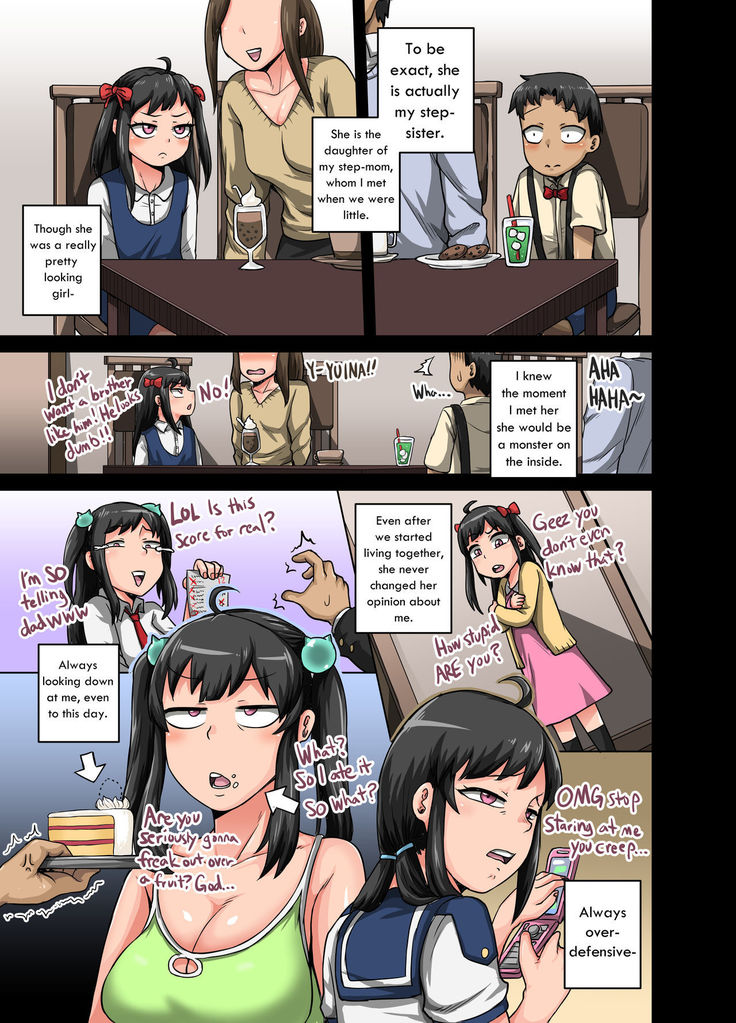 .. What kind of pleasure can we talk about here? In the first month - one and a half after childbirth, when the child is applied chaotically, without a pronounced regimen, sucks often and for a long time, the mother can feel good only if breastfeeding is organized correctly, it is convenient for the mother to feed, she knows how to do it standing, lying down and sitting, and even moving. nine0003
.. What kind of pleasure can we talk about here? In the first month - one and a half after childbirth, when the child is applied chaotically, without a pronounced regimen, sucks often and for a long time, the mother can feel good only if breastfeeding is organized correctly, it is convenient for the mother to feed, she knows how to do it standing, lying down and sitting, and even moving. nine0003
“After each feeding, you must express the rest of the milk, otherwise the milk will be wasted”
No, you do not need to express after each feeding if breastfeeding is properly organized. If you feed your baby 6 times a day and do not express, indeed, milk can disappear very quickly. If you express after each feeding, then you can support lactation for some time. The terms are different, but rarely it is more than six months, cases of feeding on such behavior for more than a year are rare. nine0003
When feeding a baby on demand, the mother always has as much milk as the baby needs and there is no need to pump after each application. In order for the newborn to completely suck out the breast, it is applied to one breast for 2-3 hours, and to the other for the next 2-3 hours. Somewhere after 3 months, when the child is already applied relatively rarely, he may need a second breast in one attachment, then the next time he is applied to the one that was last.
In order for the newborn to completely suck out the breast, it is applied to one breast for 2-3 hours, and to the other for the next 2-3 hours. Somewhere after 3 months, when the child is already applied relatively rarely, he may need a second breast in one attachment, then the next time he is applied to the one that was last.
There is one unpleasant “pitfall” in regular pumping after feeding, which even most doctors are not aware of. It's called lactase deficiency. When a mother expresses after a feed, she expresses just the “hind” fatty milk, which is relatively poor in milk sugar, lactose. She feeds the child mainly with the anterior portion, which accumulates in the breast between rare feedings. There is a lot of lactose in the anterior portion. The child is fed "only lactose", the gastrointestinal tract of the child after some time ceases to cope with such volumes of lactose. Lactase deficiency develops (Lactase is an enzyme that breaks down lactose - milk sugar, it begins to be missed). This is one of the reasons for the development of lactase deficiency; the second, for example, is this: the mother gives the child two breasts in one feeding. But about this separately. nine0003
This is one of the reasons for the development of lactase deficiency; the second, for example, is this: the mother gives the child two breasts in one feeding. But about this separately. nine0003
“You should give your baby two breasts at one feeding.”
No, it is not necessary to give two breasts. A newborn baby can be applied for 1.5-3 hours to one breast. Then 1.5-3 hours to another (for example, the baby woke up, sucked a little and didn’t want to anymore, but after 30 minutes he wanted to suck a little more. After 20 minutes, he sucked longer and fell asleep; all these attachments were from one breast; when the baby wakes up, you can offer him another breast). We need this so that the baby sucks the breast to the end, and receives "front" and "hind" milk in a balanced amount. If the baby is transferred to the other breast in the middle of feeding, he will receive less fat-rich hind milk. He will suck mainly the front portion from one breast and add the same from the other.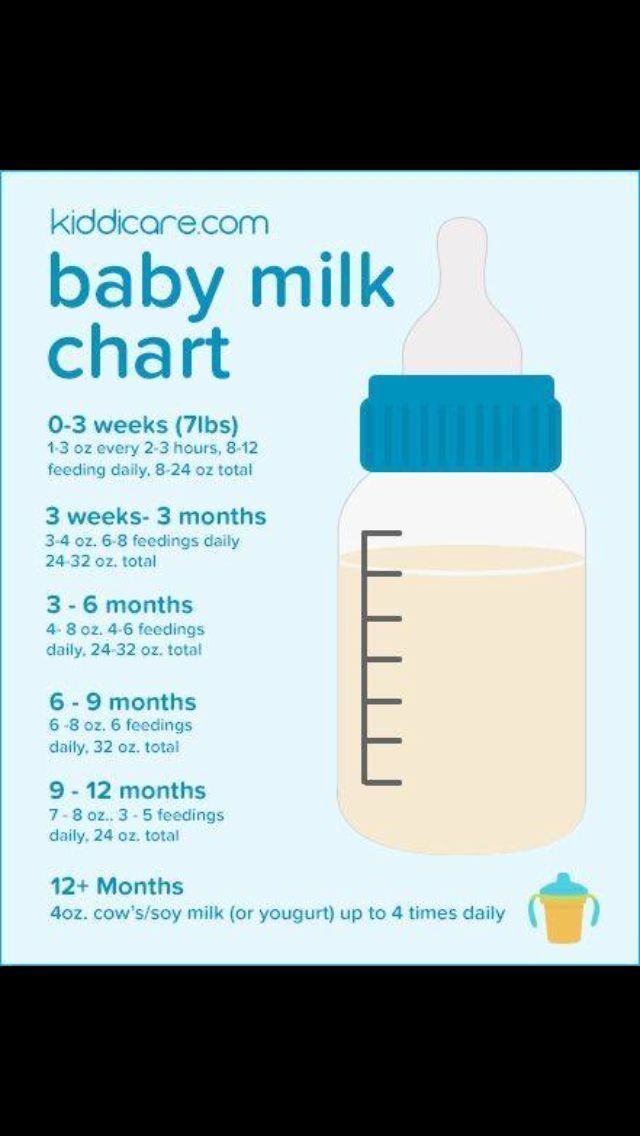 Foremilk is rich in lactose, and after a while the baby can no longer cope with the load of lactose. Lactose intolerance develops. nine0003
Foremilk is rich in lactose, and after a while the baby can no longer cope with the load of lactose. Lactose intolerance develops. nine0003
Transferring a baby from one breast to another can cause hyperlactation in some women, and if the mother also expresses both breasts after each feeding ... There are such mothers. Curtailing excess milk is sometimes more difficult than adding missing ... In some cases, feeding at one feeding from two breasts is necessary to stimulate lactation when there is a shortage of milk. A growing baby, most often after 3-4 months, may need two breasts in one feeding. Then the next application begins with the breast that was last. nine0003
“The more liquid you drink, the more milk”
There are mothers who try to drink as much as possible, sometimes up to 5 liters of liquid per day. And a nursing mother should drink only as much as she wants. By thirst. Mom shouldn't be thirsty. And if water is drunk on purpose, and even more than 3-3.5 liters per day, lactation can begin to be suppressed.
“Sucking the fist is very harmful”
The whole end of pregnancy the child sucked the fist, so he learned to suck. Fist sucking is one of the inborn habits of a newborn. After childbirth, the baby begins to suck on the fist as soon as it enters his mouth. At 3-4 months, the fist is the first thing that the baby can put into his mouth on his own. He can do things on his own!!! This is amazing! And at this age, many babies begin to actively suck their fingers and fists. There is nothing wrong with that. Mom only needs to watch the baby a little. If a baby plays with a fist, then he sucks, then he stops, he can not be distracted from this activity. If the baby begins to actively suck the fist, then the baby wants to suck for real, offer him a breast. If the need to suckle the baby is fully satisfied by the breast, then the baby stops sucking the fist by 5-6 months. (Then, at 6-7 months, he begins to “look for teeth”, but this is a completely different behavior). The cam baby sucks almost the same as the breast, opening its mouth wide. Some babies have a very funny behavior when, having stuck to the chest, the baby tries to put his fist in his mouth ...
Some babies have a very funny behavior when, having stuck to the chest, the baby tries to put his fist in his mouth ...
"My baby needs a pacifier"
The baby is not designed by nature to suckle anything other than the breast (and the fist, in a pinch). A child is always taught to use a pacifier. There are children who immediately push out the pacifier with their tongue. And there are those who begin to suck it. There are mothers who hold the pacifier with their finger so that her child does not push it out. Usually, the first time a baby gets a dummy is when he showed concern and the mother does not know how to calm him down. To calm down, the child needs to suck on the breast, well, they didn’t give him a breast, they gave him something else, he will have to suck what they give ...
“A child often asks for breasts, which means that he is hungry, there is not enough milk for him”
As mentioned above, a newborn child asks to be breastfed often, not at all because he is hungry. He wants to suck, he wants to mom. He constantly needs confirmation of psycho-emotional and physical contact with his mother.
He wants to suck, he wants to mom. He constantly needs confirmation of psycho-emotional and physical contact with his mother.
“Sufficient milk or not, we will find out on control feeding”
We will not learn anything on control feeding (the child is weighed before and after feeding, the difference is calculated and find out how much he sucked for feeding). Because:
- A baby who feeds on demand constantly sucks different portions of milk. In one application 5 ml, in another - 50, in the third - 150. You can get 5 ml. (Once I weighed my daughter after 30 minutes of suckling. She gained 14 g. In the first month of her life, she gained 1200 g - and what would the district pediatrician tell me if this was control feeding in the clinic?)
- The newborn is designed to receive small portions of milk, but often. The vast majority of newborns in the conditions of feeding 6-7 times a day still suck out small portions of milk, and not 6 times 120 ml. And of course they don't eat.
 They start gaining poorly or stop gaining weight, or lose weight altogether. nine0040
They start gaining poorly or stop gaining weight, or lose weight altogether. nine0040
Whether or not enough milk is available can be determined in two ways:
Wet diaper test. (This is a test for wet diapers, not for used diapers, because you need to know exactly the number of urination). If a child older than 7 days pees more than 6-8 times a day, his urine is light, transparent, odorless, then he receives a sufficient amount of milk. Usually the child pees during wakefulness every 15-30 minutes. If a mother uses diapers, but wants to find out if there is enough milk or not, she needs to remove the diapers from the child for three hours. If the baby pees 3-4 times or more in three hours, then you can not count further. If you peed 3 times or less, we count for 6 hours. If in six hours he peed 4-5 times or more, you can not count further, if less than 4, we count further. And so on… Weekly weight gain (for a child older than 7 days) should be between 125 and 500 g.
“If applied frequently, the baby will suck everything out quickly, the breast is soft all the time – there is no milk. It is necessary to “save” milk for feeding”
It is necessary to “save” milk for feeding”
When feeding a child on demand, the breast becomes soft about a month after the start of feeding, when lactation becomes stable. Milk begins to be produced only when the baby suckles. The breast is never “empty”, in response to the sucking of the child, milk is constantly produced in it. If the mother is trying to fill her breasts for feeding, waiting for the breasts to “fill up”, she gradually reduces the amount of milk by such actions. The more mother attaches the child, the more milk, and not vice versa. nine0003
“The stomach needs to rest”
But the child's stomach doesn't work very well. Milk there only curdles and is quickly evacuated to the intestines, where the actual digestion and absorption takes place. This is the prejudice from the old song about feeding according to the schedule after 3 hours. The newborn does not have a clock. No mammal makes even intervals in feeding its newborns. The body of the child is adapted to the continuous flow of mother's milk, and he does not need to rest at all. nine0003
nine0003
“After each feeding, keep the baby upright for 20 minutes”
Do not hold the baby upright after each feeding, especially if the baby has fallen asleep. Most of the time the baby lies on its side. If he burps a little, then the diaper just changes under his cheek. It is necessary to hold the artificial man vertically so that he does not spill the 120g poured into him. And we are talking about babies who are fed on demand and receive small portions of mother's milk. In addition, the cardiac sphincter of the stomach needs training, which it can only receive if the child is lying down. nine0003
“You need to sleep at night”
At night, you need to not only sleep, but suck your breast. Most newborn children are so arranged that they sleep from 10-11 pm to 3-4 am, then they begin to wake up and ask for breasts. In a child of the first month of life, applications in the morning hours (from 3 to 8) are usually 4-6. Night feedings with properly organized breastfeeding look something like this: the baby got worried, the mother put it to the breast, the baby sleeps sucking and the mother also sleeps, after a while he lets go of the breast and sleeps more soundly. And such episodes happen in a night 4-6. All this is easy to organize if the mother sleeps with her child, and for this she needs to be able to feed lying down in a comfortable position. nine0003
And such episodes happen in a night 4-6. All this is easy to organize if the mother sleeps with her child, and for this she needs to be able to feed lying down in a comfortable position. nine0003
If the baby sleeps separately from the mother, in his own bed, then he stops waking up for morning feedings, sometimes already a week after birth, sometimes by 1.5-2 months. Most modern mothers take this with relief, because. for them, finally, the night running back and forth, nodding while sitting in a chair or on a bed over a sucking child, and some also pumped at night ... And here they are waiting for a pitfall called insufficient stimulation of prolactin and, as a result, a decrease in the amount of milk . A mother and her child are a wonderful self-regulating system. While the baby has a need to suck in the morning, his mother produces the maximum amount of prolactin, just from about 3 to 8 in the morning. nine0003
Prolactin is always present in the female body in small amounts, its concentration in the blood increases significantly after the baby begins to breastfeed, most of all it is obtained in the morning hours from 3 to 8 in the morning.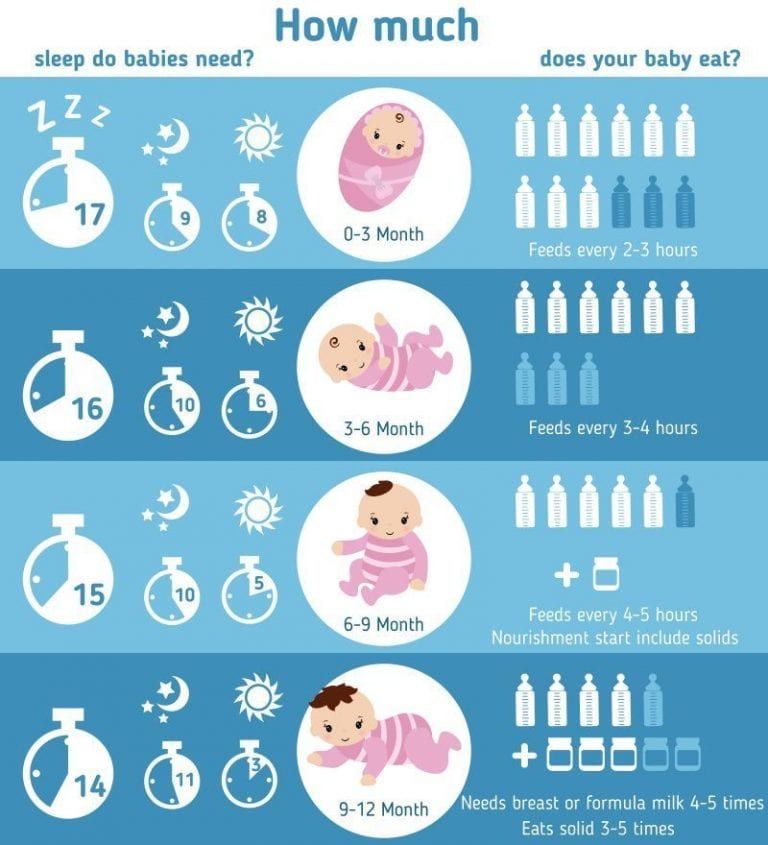 Prolactin, which appeared in the morning, is engaged in the production of milk during the day. It turns out who sucks at night, stimulates his mother's prolactin and provides himself with a decent amount of milk during the day. And whoever fails to suckle at night, he can quite quickly be left without milk during the day. No mammal takes a nightly break from feeding its young. nine0003
Prolactin, which appeared in the morning, is engaged in the production of milk during the day. It turns out who sucks at night, stimulates his mother's prolactin and provides himself with a decent amount of milk during the day. And whoever fails to suckle at night, he can quite quickly be left without milk during the day. No mammal takes a nightly break from feeding its young. nine0003
“I lost my milk because of my “nerves””
Milk production depends on the hormone prolactin, the amount of which depends on the number of times the baby is latched on and nothing else. The experiences of the mother on any occasion do not affect him. But the release of milk from the breast depends on the hormone oxytocin, which is engaged in the fact that it contributes to the contraction of muscle cells around the lobules of the gland and thereby contributes to the flow of milk. The amount of this hormone is very dependent on the psychological state of the woman. If she is frightened, tired, in pain or in any other discomfort during feeding, oxytocin stops working and milk stops flowing from the breast. A child cannot suck it out, a breast pump does not express it, and it cannot come out with its hands ...
A child cannot suck it out, a breast pump does not express it, and it cannot come out with its hands ...
The manifestation of the “oxytocin reflex” was observed by every breastfeeding woman: when a mother hears the crying of a child (and not necessarily her own), her milk begins to leak. The body tells the mother that it is time to apply the baby. In a situation of stress or fear, nothing like this is observed. (Relationship to the ancient instinct of self-preservation: if a woman runs from a tiger and she smells of leaking milk, the tiger will find and eat her faster, so while she runs in fear through the jungle with a child under her arm, the milk will not leak when she gets to the safety of the cave - and calmly settle down to feed the child, the milk will come again.)
Modern stressful situations work like those tigers. In order for milk to flow out again, you must try to relax during feeding, think only about the child. You can drink soothing herbs, shoulder massage, calm conversation helps well. Anything to help you relax. And most modern mothers are not able to relax during feeding, it is uncomfortable for them to sit or lie down, it can be painful to feed - all this prevents the manifestation of the oxytocin reflex - milk remains in the breast, which leads to a decrease in lactation. nine0003
Anything to help you relax. And most modern mothers are not able to relax during feeding, it is uncomfortable for them to sit or lie down, it can be painful to feed - all this prevents the manifestation of the oxytocin reflex - milk remains in the breast, which leads to a decrease in lactation. nine0003
"The baby is too fat, it is necessary to limit the number of feedings and give water"
A breastfed child gains 125 to 500 g per week, or 500 to 2000 g per month. Usually, by 6 months, a child born with a weight of 3-3.5 kg weighs about 8 kg. The rate of gain is very individual, there is never any talk of "overfeeding", children who are actively gaining weight grow rapidly in length and look proportionate. Children who gain 1.5-2 kg per month in the first half of life, usually sharply reduce weight gain in the second half of the year and can weigh 12-14 kg by the year. There is never a need to limit the number of feedings, much less to give water. nine0003
“Baby lacks nutrients, needs complementary foods from the age of 4 months”
The need for other food manifests itself in a child of about 6 months of age, when he begins to actively wonder what everyone is eating there. And if a mother takes a baby to the table with her, he begins to actively take an interest in the contents of his plate. This behavior is called active food interest, and it indicates that the child is ready to get acquainted with new food and can begin it. Nevertheless, breast milk remains the main food of the child in the first year of life, and in many cases even at the beginning of the second, contains absolutely all the nutrients the child needs and much more. nine0003
And if a mother takes a baby to the table with her, he begins to actively take an interest in the contents of his plate. This behavior is called active food interest, and it indicates that the child is ready to get acquainted with new food and can begin it. Nevertheless, breast milk remains the main food of the child in the first year of life, and in many cases even at the beginning of the second, contains absolutely all the nutrients the child needs and much more. nine0003
"A nursing mother should have a strict diet"
Food should be habitual. It is preferable not to use exotic foods in the diet that are not characteristic of the "native" climatic zone. A breastfeeding mother may have interesting nutritional needs, and they must be met in the same way as the desires of a pregnant woman. A woman should eat according to her appetite, and not stick food for two into herself. And, of course, you need to try to eat healthy food. Do not use products containing preservatives, dyes and other unhealthy substances. nine0003
nine0003
“A child should be fed for no more than a year, then there is nothing useful in milk anyway”
After a year of lactation, the quality of milk does not deteriorate at all. Milk continues to be a source of all the necessary nutrients for the child, and in addition, it supplies enzymes that help the child absorb food, contains the baby's immune defenses, and a lot of other substances that are not found in artificial mixtures, or in baby food, or in food. adults (hormones, tissue growth factors, biologically active substances and much, much more). nine0003
And don't forget that breastfeeding is not only nutrition, it is a special way of communication between mother and baby. Breastfeeding is necessary not only to eat, but also, for example, to sleep peacefully, or to receive comfort, support in difficult times. All this is necessary not only in the first year of life.
Lilia Kazakova, pediatrician,
Head of Breastfeeding and Child Care Consultants.
Basic rules for breastfeeding
Everyone can breastfeed! Breastfeeding in the presence of a live and healthy baby is impossible only when there is no mother or both mammary glands are removed from her. A biological mother can feed twins, and even triplets, without using supplementary food for up to 5 months. Even twins and triplets can grow up on exclusive breastfeeding for up to 4-5 months. A foster mother can breastfeed a baby, even if she has not had children of her own before.
A biological mother can feed twins, and even triplets, without using supplementary food for up to 5 months. Even twins and triplets can grow up on exclusive breastfeeding for up to 4-5 months. A foster mother can breastfeed a baby, even if she has not had children of her own before.
The true lack of milk, which modern mothers are so scared of today, is found in only 3% of women. Other 97% can breastfeed, although they often don't realize it. Quite often, women complain that they lose milk from everyday problems, disorder, stress or nervous tension. It turns out that there is no such reason. Studies have convincingly proven that if a woman WANTS to FEED, she will do it anyway. So, as a rule, the women themselves are to blame for the "lack" of milk, who do not want to breastfeed their baby or follow illiterate recommendations. If a young mother is introduced to the basic rules and taught the techniques of breastfeeding, she successfully breastfeeds her baby for as long as she likes and safely stops lactation in physiological terms. nine0003
nine0003
Successful breastfeeding requires:
- a woman's desire to breastfeed;
- training in breastfeeding technique and practice;
- compliance with the basic rules of breastfeeding;
- timely resolution of breastfeeding problems with the help of lactation consultants;
- support for family members and experienced mothers with a positive experience of continuous breastfeeding for more than 1 year. nine0040
Proper attachment to the breast
Proper attachment:
- Feeding the baby does not cause pain, pain may occur only at the moment the baby grabs the breast;
- does not cause nipple injury, mastitis and other problems;
- the baby is sucking enough milk;
- The duration of the feeding is not important.
Incorrect application:
- when feeding a child, pain occurs; nine0040
- there are damage to the nipples, mastitis, lactostasis and other problems;
- there is a need to limit the time of feeding;
- the child sucks out little milk and does not eat enough.

Comfortable breastfeeding position
It is very important that the mother adopts a comfortable breastfeeding position herself and gives a comfortable position to the baby. A comfortable posture during feeding ensures a good outflow of milk from the breast and is the prevention of lactostasis.
Mandatory for demonstration and teaching of poses lying and sitting from under the arm . Feeding in the basic position sitting and sitting on the leg is more difficult to perform. Therefore, it is advisable to learn these two postures after mastering the correct application in the “from under the arm” and “lying” postures for 3-7 days.
Feeding on Demand
Breastfeeding is a reciprocal process, so when we talk about feeding on demand, we mean demands not only from the baby, but also from the mother. nine0003
Duration of feeding
When the baby feels full, he/she feels comfortable, stops suckling and lets go of the breast.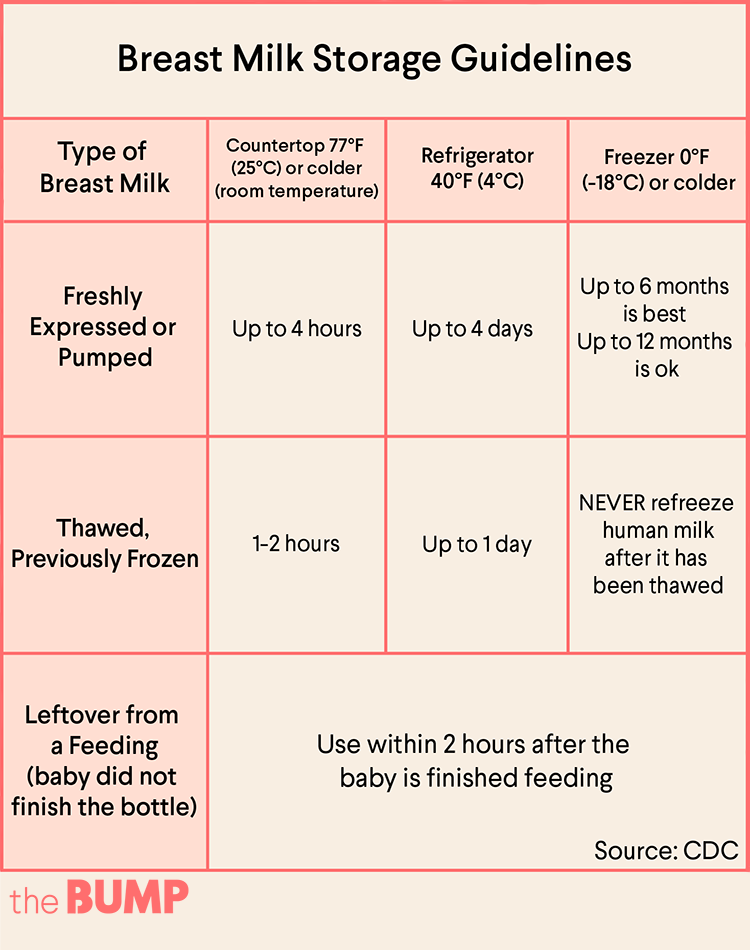 There is no need to stop feeding after a certain period of time and take the breast from the baby. Different babies stay at the breast for different lengths of time. Most of them are saturated in 20-40 minutes, and some babies can suckle for 1 hour or more.
There is no need to stop feeding after a certain period of time and take the breast from the baby. Different babies stay at the breast for different lengths of time. Most of them are saturated in 20-40 minutes, and some babies can suckle for 1 hour or more.
The duration of feeding depends greatly on the age of the child. The smaller the child, the more often and more acutely he experiences a feeling of discomfort, and the longer and more often he is at the breast. As the baby grows older, the discomfort becomes less frequent and less acute. In addition, he becomes strong and agile enough to quickly handle a fairly large volume of milk. Therefore, from 2-3 months in children, short-term attachments to the breast appear, which are necessary to achieve psycho-emotional comfort, and prolonged sucking for saturation, which are grouped around dreams, persists. nine0003
Feeding from both breasts
Do not transfer the baby to the second breast before he suckles the first. Since the milk in the mother's breast is heterogeneous and is divided into earlier milk, which the baby receives at the beginning of a feed, and late milk, which the baby receives at the end of a feed, one should not rush to offer the child a second breast.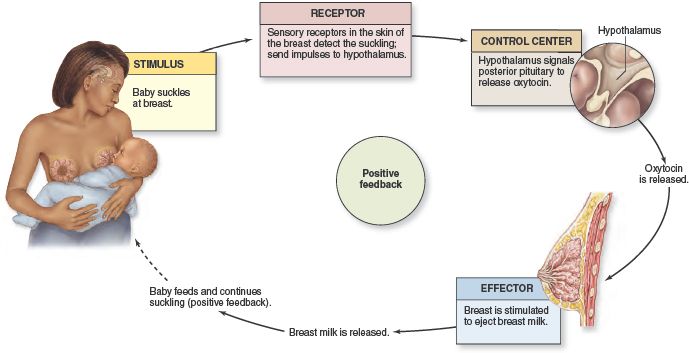 If the mother rushes to give the baby a second breast, then he will not get enough late milk, rich in fats. As a result, he may experience digestive problems: lactase deficiency, frothy stools, etc. When feeding on demand, it should be ensured that each mammary gland is offered to the child for 1-2 hours and only then changed to another. nine0003
If the mother rushes to give the baby a second breast, then he will not get enough late milk, rich in fats. As a result, he may experience digestive problems: lactase deficiency, frothy stools, etc. When feeding on demand, it should be ensured that each mammary gland is offered to the child for 1-2 hours and only then changed to another. nine0003
Night feedings
Night feedings are necessary to maintain a full long lactation. Breast sucking between 3 and 8 am stimulates the production of milk in sufficient quantities for subsequent daily feedings. At least 2-3 feedings should be organized during this period. For best development, the child must necessarily receive both daytime and nighttime milk.
Avoid supplementary feeding and supplementation of the baby
Breast milk is a balanced food and drink for babies. It fully satisfies all the vital needs of the child. With properly organized breastfeeding, including proper attachment, frequent and prolonged feeding of the child, joint sleep and night feeding, the baby does not need additional nutrition up to 6 months of life.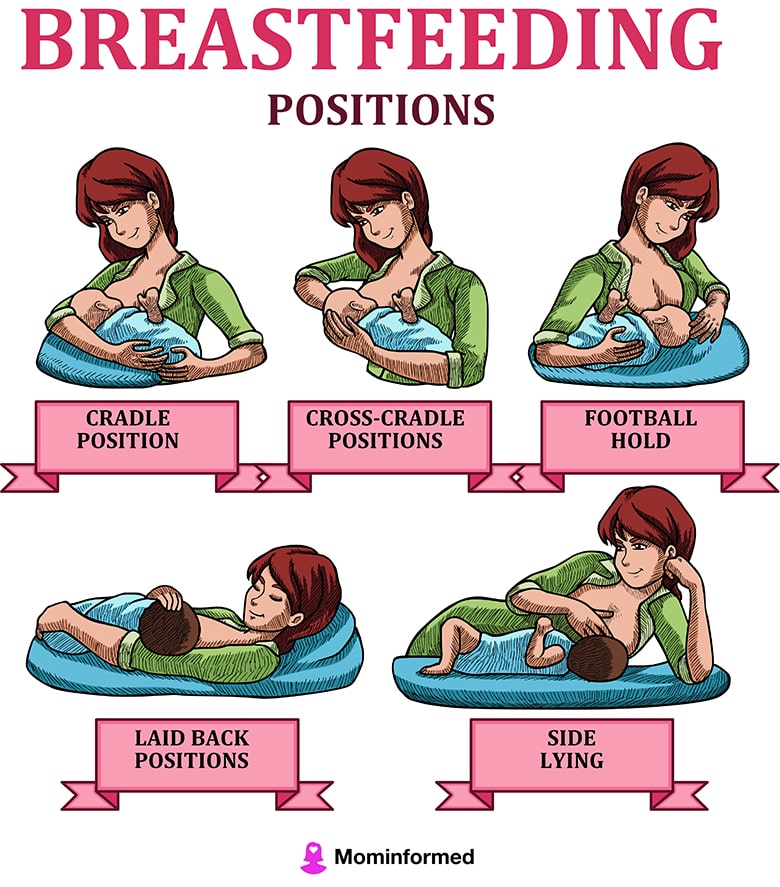 nine0003
nine0003
A properly organized exclusively breastfeeding does not need to be supplemented until 6 months of age. And from 6 months, he should begin to introduce complementary foods.
When the baby is supplemented, the mother's milk supply decreases, and breastfeeding may end by 3-6 months.
The dangers of bottle feeding and the use of pacifiers
Babies suck differently at the breast and bottle or pacifier. A baby who has been bottle-fed or given a pacifier will not properly latch on to the mother's breast, so the mother may have problems after bottle-feeding and using a pacifier. Numerous examples prove that sometimes even one bottle-feeding is enough for the baby to refuse the breast, and there are a lot of complications with further breastfeeding. The use of a pacifier leads to the fact that the child begins to grasp the breast incorrectly, which provokes nipple injuries. In addition, it is known that even short-term use of a pacifier can lead to insufficient weight gain in a child and a reduction in maternal lactation.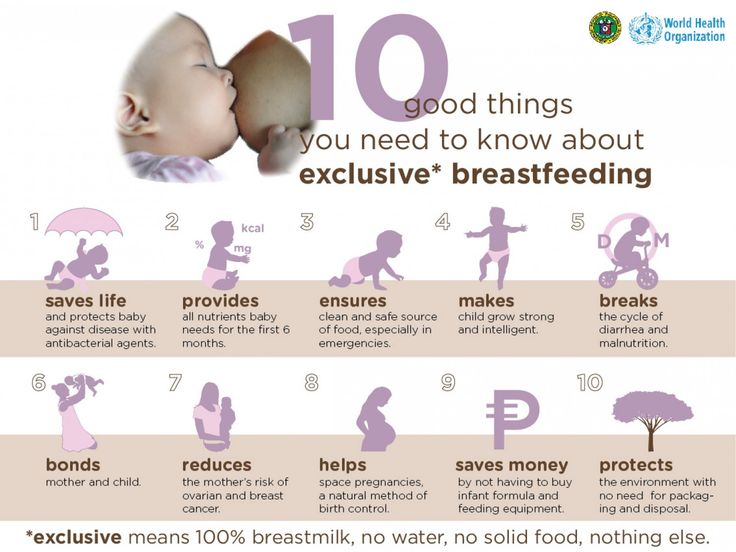 nine0003
nine0003
Washing the breast
When washing the breast, especially with soap, the protective layer of a special lubricant is removed from the skin of the nipple and near-nipple space, which softens them and contains protective factors that prevent the penetration of pathogenic microbes into the skin of the breast. Frequent washing of nipples with soap dries the skin and leads to abrasions, cracks and mastitis. Therefore, you should not wash your breasts before each feeding.
It is sufficient to wash the chest with plain water without soap daily or once every 3-7 days when taking a normal hygienic shower or bath. nine0223
Expression
If the mother is breastfeeding on demand, there is no need to express milk after each feed. In normal lactation, pumping interferes with breastfeeding because it takes time that could be better devoted to the baby or household chores and is inconvenient. Pumping is necessary in case of problems - in case of breast engorgement, treatment of lactostasis or mastitis, in the treatment of cracked nipples, with a lack of milk to increase its production, in case of forced separation of mother and child in order to save milk, etc.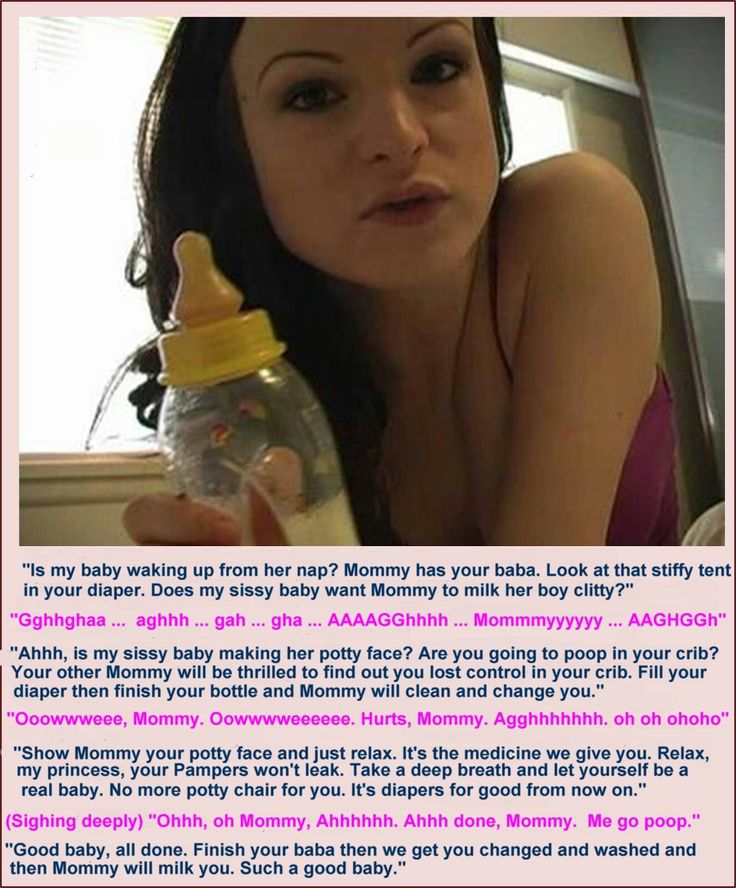 The need for pumping is determined by a lactation consultant. nine0003
The need for pumping is determined by a lactation consultant. nine0003
How can you check if your baby is getting enough milk?
To make sure that the baby is getting enough breast milk, you need to regularly test for "wet diapers" and weigh the baby every 1-2 months, and if something is bothering, then once a week. A healthy child with adequate nutrition every week gains weight from 120 to 500 grams. Frequent control weighings, performed daily or even several times a day, do not provide objective information about the nutritional value of the baby. Moreover, control weighing makes mother and child nervous, as a result of which the baby gains weight worse, and the mother's lactation decreases. nine0003
Nursing mother's nutrition and drinking regimen
During breastfeeding, a woman's diet should not differ from her usual diet in terms of food composition. Since pregnancy, childbirth and breastfeeding are natural physiological processes, their success cannot be fundamentally related to a woman's diet.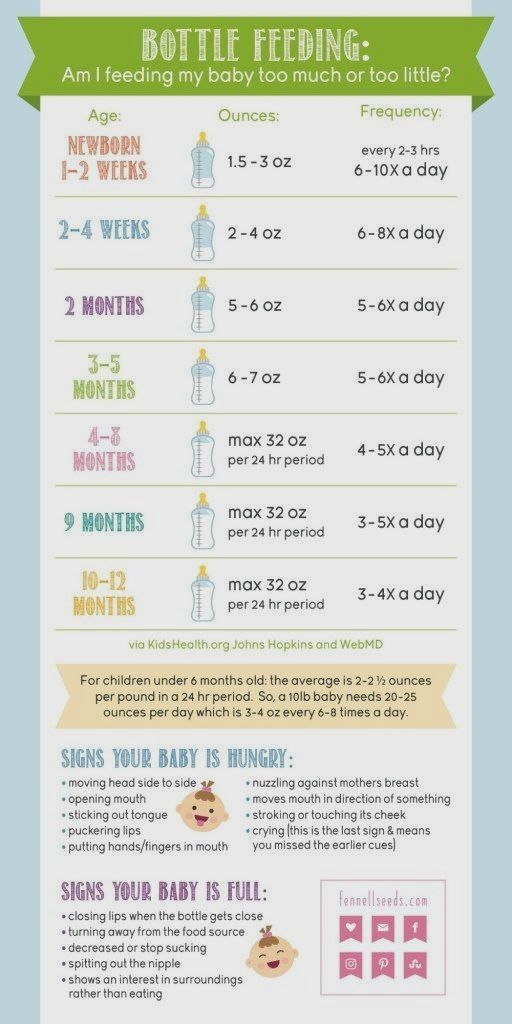
Drink to stimulate lactation
There are no universal recipes to stimulate lactation. Neither milk tea nor carrot juice will help if the baby is not breastfeeding enough. Lactation is stimulated only by the frequency and duration of breastfeeding. If the baby suckles rarely and briefly, then the volume of milk will be minimal, and if it is long and often, then milk will always be in abundance. nine0003
If either parent is allergic
If the child's mother or father has allergies, then the mother should be more careful about her diet. Particular vigilance should be shown if the mother of the child suffers from allergies. The baby can be negatively affected not only by the mother's food allergy, but also by allergens such as poplar fluff, odors, dust, etc. In this case, the child may be prone to diathesis.
In children with a predisposition to allergies, diathesis may occur on the following foods:
- citrus - lemon, orange, mandarin, grapefruit;
- strawberries and raspberries;
- foreign protein - beef and dairy products from cow's milk, fish and fish products, poultry and eggs, soybeans and legumes (vegetable protein), etc.



